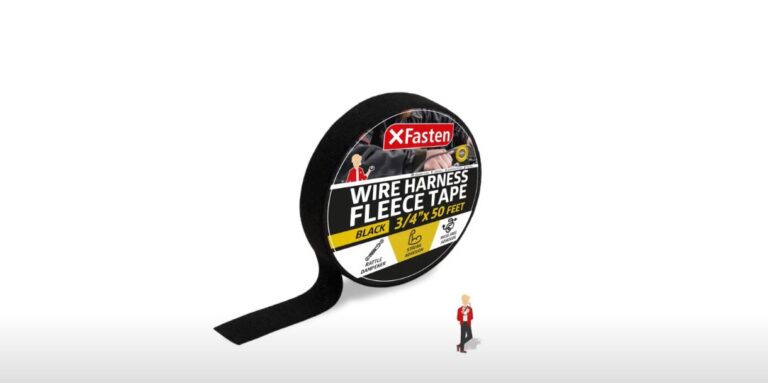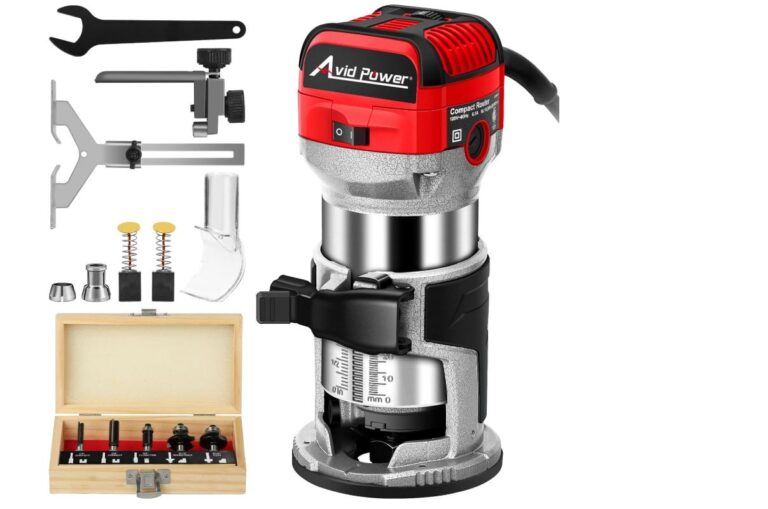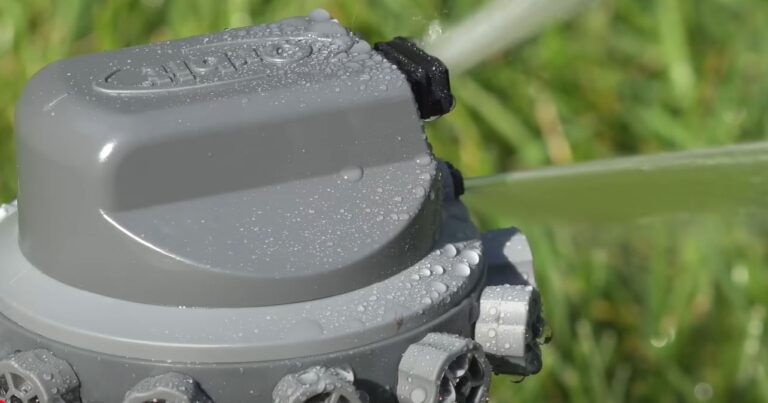5 Best Silicone Reusable Freezer Bags for Safe and Easy Food Storage Expert
In the modern kitchen, convenience often clashes with conscience. We love the easy storage and quick access that plastic zip-top bags provide, but we cringe at the endless waste they generate. For years, the freezer section of our homes has been a graveyard of single-use plastics, creating an environmental burden and a steady drain on our wallets.
But the kitchen storage landscape has undergone a revolution. Enter the silicone reusable freezer bag a game-changer that combines the best of both worlds: the flexibility and convenience of a bag with the durability and sustainability of a premium container. These bags are not just a trend; they are a fundamental upgrade to how we store food, preserve freshness, and reduce our carbon footprint.
This comprehensive guide will walk you through everything you need to know about making the switch. We’ll explore the compelling reasons why silicone bags are the future of food preservation, and we’ll arm you with a detailed buying guide so you can choose the absolute best options on the market. Get ready to kiss single-use plastic goodbye and welcome a smarter, greener way to manage your freezer.
5 Best Silicone Reusable Freezer Bags: Our Top Recommendations
Choosing the best reusable silicone freezer bag means finding the perfect balance between premium material quality, a leak-proof seal you can trust, and features that make your life easier not harder.
We’ve sifted through the market, tested the seals, and analyzed the long-term durability to bring you the five absolute best silicone freezer bags available today. Whether you’re a bulk meal-prepper or just packing a daily lunch, there is a perfect match for your needs.
2.1 Product 1: Stasher Silicone Reusable Freezer Bag

The Stasher Bag is often considered the gold standard in the reusable silicone category. When you talk about making an investment in your kitchen, this is the bag people mean. They pioneered the use of platinum-cured silicone, setting the bar high for safety and versatility.
The Platinum Standard for Quality
What truly sets Stasher apart is the patented Pinch-Loc® seal. Forget cheap, fiddly plastic sliders; this is a thick, durable, self-sealing closure built right into the silicone body. It creates an almost vacuum-tight seal, making it incredibly reliable for liquids. You can confidently store soups, stews, and marinades without fear of a messy disaster in your freezer or cooler bag.
- Non-Toxic and Safe: Made from 100% pure platinum silicone, Stasher is completely non-toxic and free from BPA, BPS, lead, and phthalates.
- Versatile Use: The extreme heat tolerance (up to ) means it’s safe for the freezer, microwave, oven, and even Sous Vide cooking.
- Ease of Cleaning: They are completely dishwasher safe and the wide opening makes for easy cleaning and thorough drying.
2.2 Product 2: Homelux Theory Silicone Freezer Bag

The Homelux Theory Silicone Freezer Bag offers a compelling combination of premium silicone material and practical design features, establishing it as a strong competitor, especially for families looking for a solid all-around option without the absolute highest price point.
Multipurpose and Temperature-Tough
Homelux Theory bags are built for the fast-paced, modern kitchen, easily transitioning between different appliances and uses. They are made from high-quality, food-grade silicone that is completely BPA-free, ensuring a safe environment for all your food. They feature a sturdy closure, often a reliable slider bar, that ensures a secure and leak-proof seal.
- High Temperature Resistance: With a thermal tolerance ranging from an impressively low up to , they handle deep freezing, stovetop boiling, and microwave reheating with ease.
- Multipurpose Versatility: Excellent for both liquid storage (soups, sauces) and protecting delicate solid items, making them highly effective for family meal prep.
- Slider Bar Seal: The closure mechanism is often a rigid slider bar, which is highly effective at creating a guaranteed leak-proof lock.
2.3 Product 3: SPLF Silicone Reusable Storage Bags

The SPLF Silicone Reusable Storage Bags stand out in the reusable market by offering an excellent variety of sizes in a cost-effective multipack. For the home chef who needs to replace a large volume of plastic bags right away, SPLF provides extra durable construction and great value.
Durability and Value in a Multipack
SPLF typically focuses on offering large sets (often 10 or 12 packs) that cover snack, sandwich, and gallon sizes, providing an immediate, comprehensive replacement for all your disposable bags. This is the ideal starter kit for a family determined to go zero-waste.
- Food-Grade and Freezer Safe: These bags are generally made from food-grade material (often a combination of PEVA or thick silicone) that is completely BPA-free and designed to be freezer safe, locking out air and preserving flavor.
- Extra Durable Construction: The design emphasizes a thicker gauge and often features reinforced double zippers for a better, more leak-resistant closure than basic zip-top styles.
- Ideal for Families: The generous multipacks are perfect for batch meal prep and packing multiple kids’ lunches daily.
2.4 Product 4: Zip Top Silicone Food Storage Bags

The Zip Top brand completely re-imagined the reusable food storage category by combining the benefits of a bag with the stability of a container. Their innovative, patent-pending design provides a solution for a common problem: how to easily fill a flexible bag.
The Revolutionary Stand-Up Design
Unlike traditional flat bags, Zip Top containers feature a one-piece, stand-up design with a wide-open mouth and a flat bottom. There are no fussy slider bars or separate lids to lose—the entire piece is the container.
- Effortless Filling and Storing: The revolutionary stand-up design allows you to pour soups or sauces into the bag one-handed, and they sit neatly on shelves, saving space in the fridge and freezer.
- Eco-Friendly and Long-Lasting: Made from 100% pure platinum silicone, they are safe, BPA-free, and incredibly durable.
- One-Piece Simplicity: No separate lid or slider means no lost parts, simplifying both storage and cleaning.
2.5 Product 5: Qinline Silicone Reusable Freezer Bags

The Qinline Silicone Reusable Freezer Bags are best known for their incredible value and generous multipacks, making them another fantastic option for budget-conscious buyers and large-scale meal preppers. They offer a comprehensive, freezer-friendly solution designed for practicality.
Value-Packed and Freezer-Friendly
Qinline bags focus on essential features: safety, reliable sealing, and high utility, all delivered in a package that provides a great cost-per-bag ratio.
- Multipack Advantage: Frequently offered in large sets (10, 12, or 24 packs), providing a high quantity of bags across snack, sandwich, and gallon sizes.
- Freezer-Friendly and Leakproof: Feature an upgraded airtight seal closure (usually a slide-zipper) that is engineered to lock out moisture, making them reliable for freezer storage.
- Transparent Design: The translucent/transparent material is great for portion control and quickly identifying contents without needing to unseal the bag.
Silicone Freezer Bags: Why the Switch is Essential
Imagine a single purchase that saves you money, cuts down your kitchen waste to near zero, and keeps your food fresher for longer. That’s the power of the reusable silicone freezer bag. They are not merely substitutes for their plastic counterparts; they are superior storage vessels designed for the rigors of modern life.
Why Choose Reusable Silicone Freezer Bags? The Case for the Upgrade
The choice to move from disposable plastic to durable silicone is driven by three powerful factors: environmental responsibility, financial sensibility, and superior food preservation. It’s an upgrade that pays for itself, both for your family and the planet.
The Environmental Revolution: Breaking the Plastic Cycle
The statistics surrounding single-use plastic waste are staggering. Millions of pounds of plastic bags end up in landfills or, worse, pollute our oceans every year. Switching to a reusable bag breaks this cycle instantly.
- Zero Waste Hero: A single, high-quality silicone bag is designed to replace hundreds of disposable plastic bags over its lifetime. Think of how many rolls of plastic bags you buy in a year—with one set of silicone bags, you eliminate that entire line item from your shopping list and your trash can.
- The Material Difference: Silicone is derived primarily from silica (sand). Unlike petroleum-based plastic, silicone does not break down into microplastics, which are tiny, harmful particles that contaminate our food and water systems. When a silicone bag finally reaches the end of its useful life (often a decade or more), it is a far more stable and inert waste product than traditional plastic.
Environmental and Cost-Saving Benefits: The Smart Financial Choice
While the initial cost of a silicone bag set is higher than a box of disposable bags, the long-term financial benefits are undeniable. This is an investment, not an expense.
- The ROI (Return on Investment): Let’s do the math. If a box of 100 disposable bags costs you $10, and you use an average of 3 boxes per year, you spend $30 annually. A quality set of four silicone bags might cost $40 to $60, but they last for 5 to 10 years. Within two years, you have saved money, and for every subsequent year, that saving multiplies dramatically.
- Food Preservation and Reduced Spoilage: Silicone bags are famous for their airtight seals. A truly airtight environment minimizes freezer burn—that crusty, dry layer that forms on food due to moisture loss. By preventing freezer burn, you significantly reduce food spoilage, meaning less food wasted and more money saved on groceries. It’s a win-win for your pantry and your purse.
Unmatched Versatility: Beyond the Freezer
Unlike plastic bags, which are often limited to cold storage, silicone bags are temperature superheroes. They can handle extremes with grace, making them the most versatile container in your kitchen.
- Freezer to Microwave (or Oven!): Most high-quality silicone is safe from temperatures as low as up to or more. This means you can freeze a portion of soup, take it out, and then safely reheat it in the microwave or even a boiling water bath (Sous Vide style) without transferring the food.
- Leak-Proof and Sturdy: The heavy-duty nature of silicone means these bags stand up on their own when filled and are incredibly difficult to puncture, rip, or leak. This makes them perfect for messy liquids like marinades, stocks, or smoothies.
- Multi-Purpose Functionality:
- Sous Vide Cooking: Their heat tolerance and air-tight seal make them ideal for precise temperature cooking.
- Marinating: Quickly marinate meat or vegetables; the bag’s seal locks in flavor, and the material prevents cross-contamination.
- Snack and Travel: They are perfect for carrying snacks, cosmetics, or toiletries, providing a flexible, durable container for life on the go.
The choice is clear: switching to reusable silicone freezer bags is a powerful, practical, and profitable move that aligns your kitchen habits with a healthier planet.
What to Look for in Silicone Freezer Bags: The Essential Buying Guide
The silicone market has exploded, meaning there are hundreds of options available. While this variety is great, it also makes choosing the best bag confusing. Not all silicone bags are created equal! To ensure you invest in a product that lasts and performs flawlessly, you need to focus on specific key attributes. Think of this as your quality checklist before you buy.
The Foundation: Material Safety and Purity
Before looking at any feature, always verify the safety and composition of the material. This is the cornerstone of responsible food storage.
- FDA-Approved Food-Grade Silicone: This is non-negotiable. Ensure the product is explicitly labeled as FDA-approved (in the US) or meets equivalent international food safety standards. This certification guarantees that the silicone is non-toxic, safe for food contact, and free from harmful fillers.
- BPA-Free, PVC-Free, and Latex-Free: While most silicone is naturally free of Bisphenol A (BPA) and other plasticizers, confirming these labels is crucial. You are buying silicone to avoid the chemical leaching associated with plastics, so ensure the product is 100% pure and won’t transfer any unwanted chemicals to your food, even when heated.
- Avoid “Silicone Blend” or “Rubber”: Be wary of manufacturers who use vague terms. You want pure, high-quality, platinum-cured silicone for maximum safety and durability.
Seal Quality: The Barrier Against Freezer Burn
The primary job of a freezer bag is to lock out air and moisture. The quality of the seal is the single most important performance factor. A poor seal is the difference between perfectly preserved soup and dry, icy leftovers.
- The Pinch-Press vs. The Slider Bar:
- Pinch-Press (Zip-Top Style): These seals rely on a thick ridge and groove that you manually press together. When done right, they can be excellent and are often easier to clean. However, a partial seal can happen easily if you miss a spot, making them slightly less reliable for liquids.
- Slider Bar (Locking Closure): This is often the superior choice for guaranteed leak-proofing, especially for liquids. A rigid plastic bar slides horizontally across the top of the bag, mechanically compressing the silicone seal for a truly airtight closure. The best versions feature a wide slider bar that is easy to grip, even when your hands are wet or cold.
- Tested Leak-Proofing: Look for brands that specifically market and demonstrate their bags as 100% leak-proof. You should be able to store a marinade or broth and confidently invert the bag without a single drop escaping.
Durability and Thickness: Built to Last
The lifespan of your bag depends entirely on the quality and thickness of the silicone material. You want a robust material that can withstand freezing, boiling, and the occasional drop.
- Silicone Gauge (Thickness): A higher-quality bag will feel substantial, almost like thick rubber. Flimsy, thin silicone bags are prone to tearing, staining, and collapsing. Thicker silicone maintains its shape better when standing up and provides superior thermal protection against freezer temperature fluctuations.
- Seam and Corner Reinforcement: The seams (where the sides of the bag are fused) and the bottom corners are the main stress points. Inspect photos or read reviews for bags that feature visibly reinforced, smooth, and robust seams. Weak seams are the first place a bag will split after repeated use.
Size and Capacity: Customizing Your Storage
Silicone bags come in a variety of sizes, usually measured in cups, ounces, or liters. A good freezer organization system relies on having the right size for the job.
- The Multi-Size Set: The best approach is to invest in a set that includes various sizes:
- Small (Snack/Sandwich, 10–16 oz): Perfect for single-serving fruit, nuts, travel snacks, or baby food portions.
- Medium (Pint/Quart, 32–50 oz): Your workhorse size for chopped vegetables, leftover chicken breasts, or small quantities of soup.
- Large (Gallon/Half-Gallon, 64+ oz): Essential for bulk freezing of meat, stocks, whole loaves of bread, or large meal-prep portions.
- Clear Volume Markings: Look for bags that have easy-to-read volume lines printed or debossed on the exterior. This is incredibly helpful for portion control and recipes.
Functionality and User Experience
A storage solution is only useful if it’s easy to live with. Look for features that simplify organization and cleanup.
- Dishwasher Safe: The easiest way to sanitize your bags is in the dishwasher. Look for bags that specifically state they are dishwasher safe and can be fully opened and inverted to ensure the inside gets thoroughly cleaned and dried.
- Easy Drying Solutions: Because the bags are thick, drying them can be a challenge. The best brands often incorporate small loops or stand-up corners that allow the bags to be propped upside down on a drying rack or attached to a clip for optimal air circulation.
- Freezer Organization Features:
- Flat Bottoms: Bags with a flat, gusseted bottom can stand upright when filled, making them simple to fill and easy to organize vertically in the freezer.
- External Labeling Area: A textured or light-colored area near the top where you can easily write the contents and date with a dry-erase marker (and wipe it off later) is a game-changer for freezer inventory.
This final segment will complete the comprehensive article, focusing on the requested comparison table, in-depth benefits, cleaning and maintenance tips, FAQs, and a concluding summary. I will ensure the text is engaging, highly readable, and adheres to all structural and SEO requirements.
3. Comparison Table: Top Silicone Freezer Bags
Sometimes, you just need the quick facts to make a decision. This table provides a snapshot of the five best reusable silicone bags we reviewed, focusing on their core specs, seal mechanism, and typical price range. (Note: Prices are approximate and based on standard individual or small-set purchases.)
4. Benefits of Using Silicone Freezer Bags
If you’re still on the fence about making the switch, remember that reusable silicone bags aren’t just a minor kitchen accessory—they represent a major lifestyle upgrade. The benefits go far beyond simple food storage, impacting your wallet and the environment in significant ways.
4.1 Eco-Friendly Alternative to Plastic
Our planet is drowning in single-use plastic, and disposable zip-top bags are a major contributor to that waste stream. Making the switch to silicone is one of the easiest and most effective ways to reduce your household’s plastic footprint.
When you invest in one high-quality silicone bag, you are essentially purchasing a replacement for hundreds, or even thousands, of plastic bags over its lifetime. It’s the definition of zero-waste living. Since quality silicone is made from silica (sand) and doesn’t break down into harmful microplastics, it offers a sustainable, non-toxic choice that helps keep our oceans and landfills cleaner.
4.2 Cost-Effective Storage Solution
Yes, the initial investment in a set of quality silicone bags can feel steep. But let’s look at the long-term math. The average family spends anywhere from $30 to $50 per year on disposable plastic bags alone.
A good set of silicone bags might cost $50 to $70 upfront, but they are designed to last for five to ten years or more. That means after the first two years, every bag you reuse is saving you money. You’re trading a perpetual expense for a one-time investment that quickly pays for itself, saving you hundreds of dollars over a decade.
4.3 Versatility in the Kitchen
The traditional plastic bag is limited: freezer and fridge storage, maybe a quick sandwich. Silicone bags, especially those made from platinum-cured material, are kitchen superheroes because they can withstand extreme temperatures with ease.
- Freezer Storage: Their thick walls and airtight seals are superior at preventing freezer burn, keeping your food fresher, longer.
- Microwave Reheating: You can safely pop leftovers (like frozen soup or rice) directly into the microwave for reheating without transferring them to a bowl.
- Sous-Vide Cooking: Silicone bags are ideal for sous-vide (cooking food slowly in temperature-controlled water), as they tolerate high heat and keep food perfectly sealed underwater.
- Lunch and Travel: They are durable enough to withstand being tossed into a backpack or lunchbox daily, acting as a flexible, leak-proof container for school lunches or travel snacks.
5. How to Properly Clean and Maintain Silicone Bags
The biggest hurdle people face with silicone bags isn’t performance—it’s cleaning and drying them! But it’s easier than you think. A little consistent care ensures your investment lasts for years and always looks and smells fresh.
5.1 Dishwasher Safe vs Hand Wash
The good news is that nearly all high-quality silicone bags are dishwasher safe!
- Dishwasher Method: For best results, place the bags open and upside down over the prongs on the top rack of your dishwasher. This ensures they are fully exposed to the water jets and get completely sterilized. If your bag has a plastic slider bar, always remove it first and wash it by hand.
- Hand Wash Method: If you don’t have a dishwasher, hand washing is fast. Turn the bag inside out to easily clean the seams and corners with a cloth or a long-handled bottle brush.
- The Crucial Step: Drying: Silicone traps water. Never seal a bag until it is completely dry inside. You must air-dry them. Use a bottle drying rack, or place them upside down over a sturdy glass or mug to allow air to circulate.
5.2 Removing Odors and Stains
Stains and smells from garlic, onions, or tomato sauce can sometimes linger, but they are easily defeated with simple, natural remedies.
- The Power of Baking Soda: For a stubborn smell, sprinkle about a tablespoon of baking soda inside the bag, add a little water to create a paste, rub it around, and let it sit for a few hours before rinsing. Baking soda is a natural deodorizer.
- The Vinegar Soak: For heavy residue or a persistent odor, fill the bag with a mixture of half hot water and half white vinegar and let it soak for an hour. Rinse thoroughly.
- Sunlight is Magic: If you have staining (especially from tomato sauce or chili), the single best trick is to wash the bag and then prop it open, letting it air-dry in direct sunlight. The UV rays naturally bleach out the stain and kill odor-causing bacteria without chemicals!
6. FAQs About Silicone Reusable Freezer Bags
Here are the quick answers to the most common questions people have when considering the switch to silicone bags.
6.1 Are silicone freezer bags safe for hot foods?
Yes, absolutely. High-quality, food-grade silicone (especially platinum-cured) is safe for extreme temperatures, generally ranging from up to . This means you can safely store hot soup in them (after letting it cool slightly, of course, to prevent steam buildup), and you can use them to heat leftovers in the microwave or a pot of boiling water. Always check the specific heat tolerance of your bag’s brand.
6.2 Can silicone freezer bags replace Ziploc bags?
For most uses, yes, and often they do a better job. Silicone bags are designed to replace disposable Ziploc bags for freezing, marinating, storing leftovers, and packing lunches. They are superior because:
- They are reusable for years.
- They don’t contain BPA or harmful plasticizers.
- Their thick material and superior seals offer better protection against freezer burn.
6.3 How long do silicone freezer bags last?
With proper care (following the cleaning and drying instructions above), a high-quality silicone freezer bag is expected to last 5 to 10 years, or even longer. They are incredibly durable and resist tearing and cracking far better than plastic, making them a true long-term purchase.
6.4 Do silicone bags work for liquids and soups?
Yes, they are excellent for liquids, provided you choose a bag with a high-quality, leak-proof seal. Look for bags that feature a slider bar or a thick, integrated Pinch-Loc® closure. When freezing liquids, remember to squeeze out all excess air before sealing and lay the bag flat until the liquid is solid.
7. Conclusion: Choosing the Best Silicone Freezer Bag for Your Needs
The reusable silicone freezer bag is undoubtedly one of the most impactful and practical switches you can make in your kitchen. It brings together environmental responsibility, long-term savings, and fantastic food-preserving performance.
Recap of Top 5 Picks
- Best Overall Premium Pick: Stasher – For the absolute most reliable, multi-purpose, leak-proof seal and material purity.
- Best for Stability & Fridge Organization: Zip Top – For its unique self-standing design that eliminates the need for bowls or racks during filling.
- Best Value & All-Rounder: Homelux Theory – Provides excellent performance, high heat tolerance, and great durability at a more accessible price.
- Best for Bulk Replacement: SPLF / Qinline – Ideal for large families or bulk meal preppers who need to replace a high volume of plastic bags affordably.
Final Buying Advice
When making your final selection, consider what you will use the bags for most often:
- If you freeze mostly liquids (soups, stock): Prioritize the seal quality (Stasher or Homelux Theory).
- If you prioritize fridge organization and ease of use: Choose a stand-up design (Zip Top or similar).
- If you are starting out and need many bags immediately: Focus on a reliable multipack value (SPLF or Qinline).
No matter which high-quality silicone bag you choose, you’re making a fantastic decision for your kitchen and for the planet! Are you ready to organize your freezer the smarter, greener way?




![Top 5 Best Greenhouse Heaters for Winter [2025 Updated]](https://homedigitized.com/wp-content/uploads/2025/07/flock-canada-geese-flying-great-salt-lake-usa-1-768x510.jpg)


